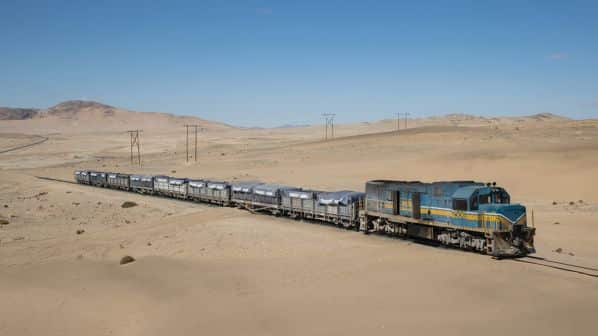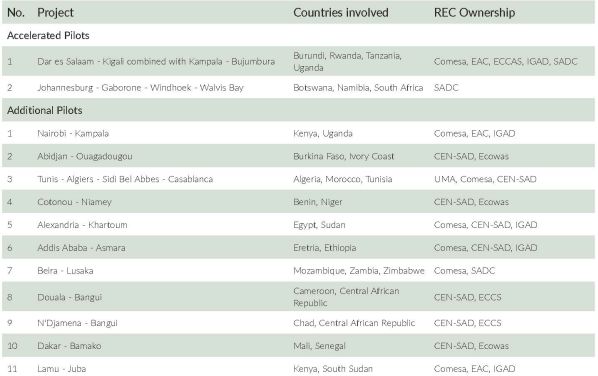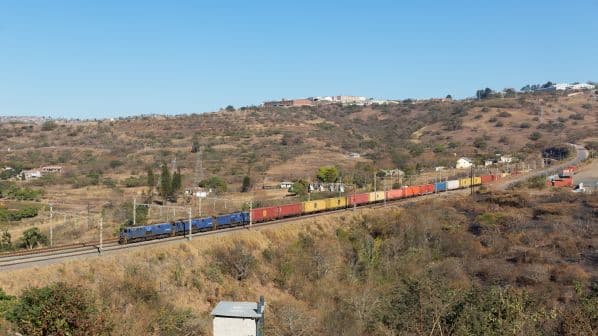IN the ongoing quest to identify promising markets ripe for expansion, Southern Africa often emerges as a leading candidate. The Southern African Development Community’s (SADC) Trade and Transit Facilitation Project holds crucial implications for this growth. This pivotal initiative aims to boost regional integration and enhance trade efficiency, potentially influencing a wide range of industries.
Crucially, the project aligns with broader ambitions to stimulate economic growth, slash transport costs, and foster socio-economic development in a sustainable manner across the 16 countries that make up the SADC region’s varying economy. This multi-pronged approach offers potentially rewarding opportunities for investors, who are likely to welcome the project.
Among the benefits are simplified customs procedures and improved transport. Indeed, the project will deliver a comprehensive railway master plan for the region, which will present solid medium-term investment prospects complete with tangible development plans.
The first General Procurement Notice for the Southern African Development Community’s (SADC) Trade and Transit Facilitation Project was issued in March this year, and again on June 9, with Actual Procurement Notices expected this month.
Crucially, the plan will emphasise striking an improved balance between rail and road transport, which has traditionally dominated planning and investment, by focusing on developing an integrated and sustainable rail network that will improve logistics efficiency across the region and beyond, enhancing multi-modal capabilities. Delivery of these projects will offer potentially lucrative opportunities for both passenger and freight service providers as well as railway original equipment manufacturers (OEMs) and contractors able to provide the requisite equipment, services, and infrastructure necessary for delivery.
The SADC project operates in close collaboration with the African Continental Free Trade Area’s (AfCFTA) Secretariat and other Regional Economic Communities (RECs). With the AfCFTA Agreement already ratified by 14 of the 16 SADC member states (see panel), the wheels are in motion to establish a vast continental market for goods, services, capital, and people, projected to be worth $US 2.5 trillion.
The Southern African Railway Association (Sara) is deeply involved in the project. As a member of its technical working group, Sara offers technical support and validation for its outcomes. This participation exemplifies the cooperative effort among various stakeholders to guarantee the project’s effectiveness and ultimately successful execution.
Essentially, AfCFTA would increase intra-African freight demand by 28%, with the demand for rail freight volumes increasing by 8% if planned infrastructure is implemented.
AfCFTA is the world’s largest free trade area bringing together the 55 countries of the African Union (AU) and eight RECs. Implementation is expected to significantly increase traffic flows across all transport modes, and according to research by the Economic Commission for Africa (ECA), intra-African trade in transport services has the potential to increase by nearly 50%.
Essentially, AfCFTA would increase intra-African freight demand by 28%, with the demand for rail freight volumes increasing by 8% if planned infrastructure is implemented. Rail is certainly starting from a low base, accounting for just 0.8% of total freight and just 0.3% of total intra-African freight so the potential for growth is significant.

Research indicates that implementing the AfCFTA planned infrastructure projects would necessitate the use of 2.2 million lorries, 169,000 wagons, 135 vessels, and 243 aircraft. Demand for rolling stock to support trade flows inevitably varies by region. West Africa accounts for 48.4% of this demand while Southern Africa represents 19.6% and North Africa 11.5%. But with AfCFTA at various stages of implementation, the Southern African region is the early front runner with the area having significant potential for the sale of rolling stock, if OEMs and manufacturers can navigate issues around localisation, among others.
Further regional economic integration, infrastructure development and inclusive growth is foreseen with the delivery of the Africa Integrated High Speed Railways Network (AIHSRN), which was initiated by the African Union (AU) as part of its Agenda2063 initiative. The project dovetails with the goals of the Programme for Infrastructure Development in Africa (PIDA) PAP 2 Rail Sub-Sector Programme.
Network
The envisioned network is designed to link the 16 landlocked nations of Africa with significant seaports and adjacent countries. The network aims to standardise railway systems across diverse regions, build East-West and North-South terrestrial links and connect Africa’s capital cities. This will lead to the unification of significant business and economic centres, enhancing economic expansion, promoting internal African free trade, and complementing the AfCFTA.
The Accelerated Railway initiative received approval from the leaders of the African Union (AU) during the 24th AU Summit in 2013, as a component of Agenda 2063. The African Union Development Agency, NEPAD (AUDA-NEPAD), has been actively involved in the implementation of the AIHSRN. Their work includes a detailed scoping study (DSS) and the formulation of the AIHSRN Master Plan, which was completed in November 2019. Further completed steps, suggestions of potential pilot projects and next steps for the scheme were offered during PIDA Week held by AUDA-NEPAD in 2020 and 2022.

Out of the 13 proposed railway projects, two within the SADC region are considered priority projects selected for implementation as part of the first 10-year Implementation Plan of Agenda 2063 that runs from 2014 to 2025:
- the Dar es Salaam - Kigali project, combined with Kampala - Bujumbura, involves the following countries: Burundi, Rwanda, Tanzania, and Uganda. These are represented by the following RECs: Comesa, EAC, ECCAS, and IGAD, and
- the Johannesburg - Gaborone - Windhoek - Walvis Bay project involving the following countries: Botswana, Namibia, South Africa, represented by SADC.
In addition, while not considered a priority project, the Beira - Lusaka railway project, which involves Mozambique, Zambia and Zimbabwe, represented by Comesa, and SADC, is the other Southern African project included among the 13 schemes.
Elsewhere, the Gaborone - Windhoek - Walvis Bay railway project (not to be confused with the 1067mm-gauge Trans-Kalahari Railway project) has significant potential for economic impact. The capital investment required for this ambitious project, which comprises both infrastructure and rolling stock, amounts to a considerable $US 7bn.
Yet despite these high upfront costs, the project’s financial evaluation suggests promising prospects for profitability and a positive contribution to the regional economy. Its Financial Net Present Value (FNPV), a measure of the project’s potential profitability, stands at $US 1.182bn. Moreover, the Economic Net Present Value (ENPV), which assesses the project’s total economic impact, is estimated at $US 162m.
The Trans-Kalahari Railway has seen notable progress. Botswana Rail, through its subsidiary Sea Rail Botswana, recently signed a property lease agreement with TransNamib Holdings for Namibia’s Gobabis section. The Environmental Impact Assessment (EIA) has already been submitted to their respective ministries, and services will commence once the railway line between Gobabis and Windhoek has been upgraded.
Many of the railway projects in Southern Africa now hailed as “game changers” have been on the table for decades. This is why road transport continues to dominate market share throughout the continent, both in terms of current freight volumes and access to funding for construction or upgrades.
Yet for Southern Africa and the entire African continent, decarbonisation and the need for sustainable and environmentally-friendly modes of transport to move ever greater volumes of freight and passengers, when combined with the implications of the AfCFTA, AIHSRN, and, most significantly, the development of the Regional Railway Master Plan for Southern Africa, promise to finally change the game once and for all.
Ultimately, the SADC Trade and Transit Facilitation Project represents more than a mere step towards enhanced integration and efficiency in Southern Africa. It embodies the region’s potential and readiness to take its place in the global economic sphere. For investors and businesses who have set their sights on Southern Africa, this project shines as a beacon, illuminating their path into one of the globe’s most promising regions.
SADC member states
Angola, Botswana, Comoros, Democratic Republic of Congo, Eswatini, Lesotho, Madagascar, Malawi, Mauritius, Mozambique, Namibia, Seychelles, South Africa, Tanzania, Zambia, and Zimbabwe. *member states which have not yet ratified the AfCFTA Agreement.

